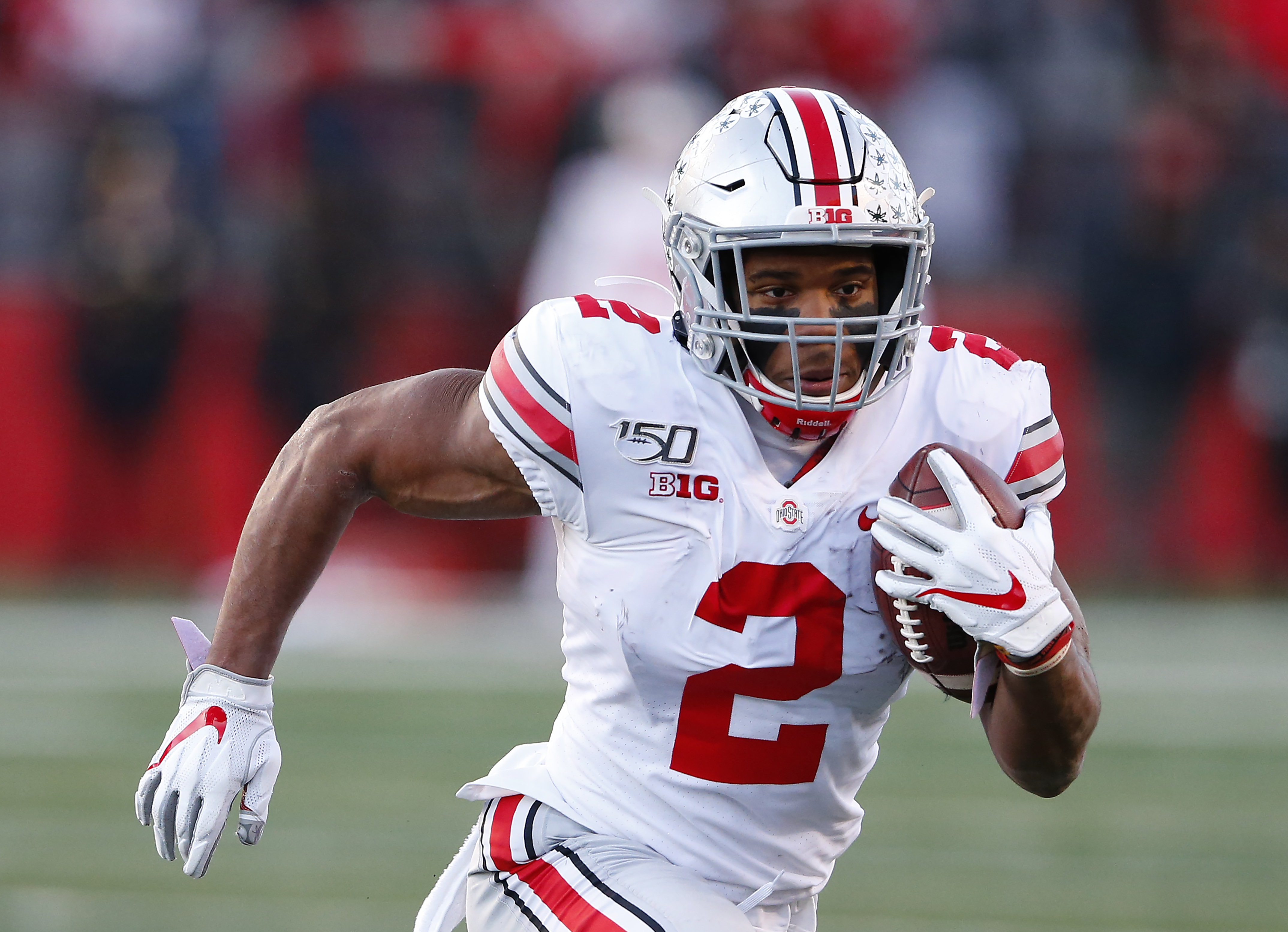Ad Disclosure

Penn State has the fourth-ranked rushing defense in the nation, tops in the Big Ten. The Nittany Lions are allowing just 75.9 yards per game and lead the nation in fewest yards per rush allowed at 2.19.
Ohio State ranks fourth in the nation in rushing offense. The Buckeyes average 287.4 yards per game on the ground, trailing only the three service academies who all run almost exclusively. In fact OSU’s 6.15 yards per carry is higher than Army, Navy and Air Force, all of whom average 5-plus yards a run but none of whom top 6 ypc.
Only Clemson, Louisiana-Lafayette and Oklahoma average more yards per carry than OSU.
And only the Buckeyes have two running backs in the top 5 among Big Ten rushing leaders: J.K. Dobbins (pictured) is second at 1,289 rushing yards through 10 games and Master Teague is fifth at 744 yards.
That’s the matchup OSU fans will want to watch when the Buckeyes, No. 2 in the College Football Playoff rankings, face the No. 8 Nittany Lions on Saturday (noon ET, Fox) at Ohio Stadium.
Penn State run D vs. Ohio State running backs
Sure, quarterback Justin Fields is always a threat to break a long run. And of course the OSU offensive line, which has been excellent at run blocking all season, will play a huge role.
But Dobbins and Teague will perhaps be the biggest keys to Saturday’s game and they will have their hands full against the Nittany Lions no matter how you break it down.
This matchup will be crucial because Ohio State runs far more often than it passes.
The Buckeyes have been way ahead in games all season and are usually cruising by halftime, so it’s no surprise that OSU would run more than pass. But it’s still striking that OSU averages 46.4 rushes per game compared to 27.8 passes per game.
What’s interesting as well is the distribution of the workload. On a lot of offenses the star running back gets the majority of carries for a team. National rushing leader Chuba Hubbard of Oklahoma State, for instance, has 259 of his team’s 465 carries, or 55.7 percent.
Dobbins, on the other hand, has 183 of the Buckeyes’ 467 carries on the season, or 39.1 percent. Carrying 40 percent of the rushing load for a team that runs much more than it passes is still a lot of work, mind you. But backup RB Teague has played a critical role in helping keep Dobbins fresh for OSU’s stretch run.
Additionally, Fields’ running ability has not only helped spread the workload on the ground but also keeps defenses guessing about where the rushing attack will come from.
Teague has 114 carries on the season, and not just late in games or in mop-up duty. The redshirt freshman has had plenty of carries in high-leverage situations, often spelling Dobbins in the second quarter of games. Teague has far more carries than any No. 2 running back in the conference; in fact three B1G teams don’t have any players with as many carries as he does — including Penn State.
On the other sideline, linebacker Micah Parsons, one of the most sought-after recruits in the Class of 2018, leads the Nittany Lions in tackles with 75. Fellow linebacker Cam Brown is second with 56.
Defensive lineman Yetur Gross-Matos, a first-team all-B1G selection last season, lead PSU in tackles for loss with 10.5 and is tied for the team lead in sacks at 6.5 with defensive end Shaka Toney.
This is likely to be the toughest challenge Ohio State’s offense — and the whole team for that matter — has faced all season. Buckeyes coach Ryan Day said this week: “We know we’ve had games when we’ve had more talent. In this game, (the) talent equates.”
So, all things being equal, can the Buckeyes run effectively against the Nittany Lions? The Big Ten championship hopes of both teams might be riding on the answer.
Longtime newspaper veteran Jim Tomlin is a writer and editor for saturdaytradition.com and saturdaydownsouth.com.